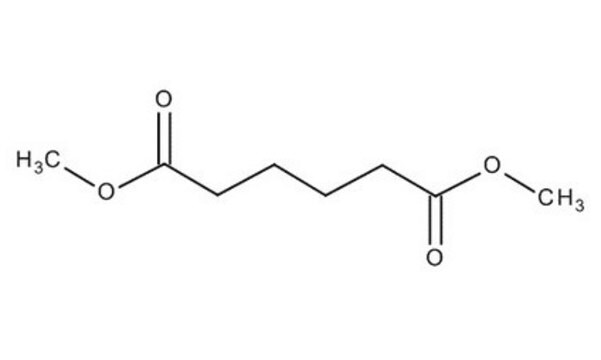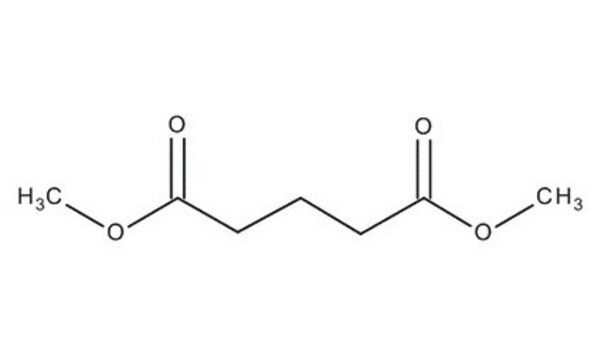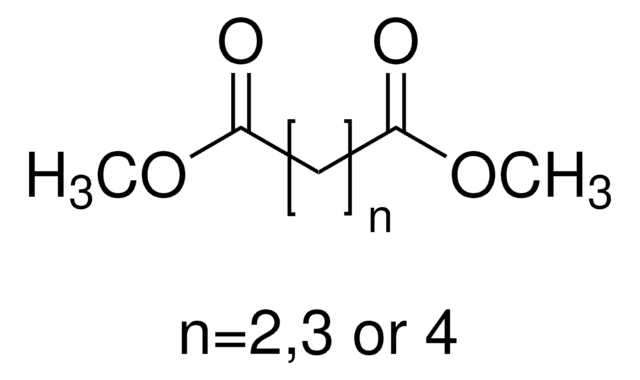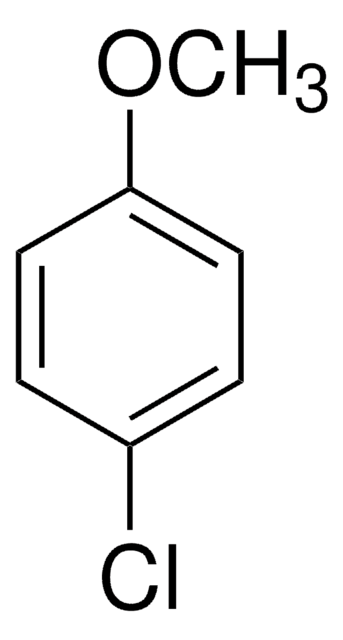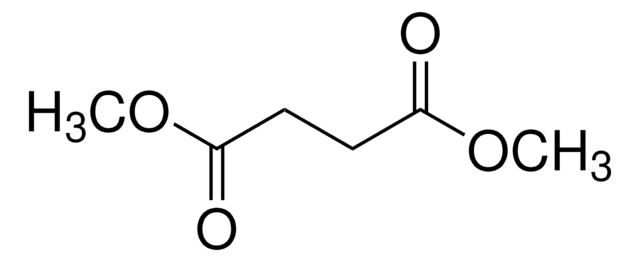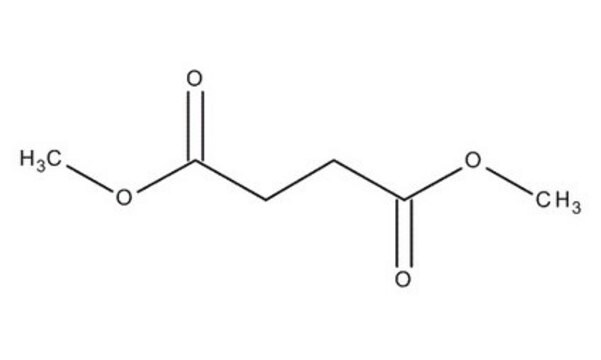186252
Dimethyl adipate
≥99%
Sinônimo(s):
Adipinic acid dimethyl ester, Dimethyl 1,6-hexanedioate, Dimethyl hexanedioate
About This Item
Produtos recomendados
pressão de vapor
0.06 mmHg ( 20 °C)
Nível de qualidade
Ensaio
≥99%
Formulário
liquid
temperatura de autoignição
680 °F
Lim. expl.
8.1 %
índice de refração
n20/D 1.428 (lit.)
p.e.
109-110 °C/14 mmHg (lit.)
pf
8 °C (lit.)
densidade
1.062 g/mL at 20 °C (lit.)
cadeia de caracteres SMILES
COC(=O)CCCCC(=O)OC
InChI
1S/C8H14O4/c1-11-7(9)5-3-4-6-8(10)12-2/h3-6H2,1-2H3
chave InChI
UDSFAEKRVUSQDD-UHFFFAOYSA-N
Procurando produtos similares? Visita Guia de comparação de produtos
Aplicação
- Micro/nanoencapsulation for cool thermal energy storage: Dimethyl adipate has been encapsulated into a polymer shell, improving its thermal properties and making it suitable for cool thermal energy storage applications (Trivedi & Parameshwaran, 2022).
- Sustainable production via non-heme iron (III) catalysis: A method for producing dimethyl adipate through oxidative cleavage of catechol using non-heme iron (III) catalysts highlights an environmentally friendly approach (Jastrzebski et al., 2015).
- Boosted nitrilation for adiponitrile production: The development of bimetallic oxide catalysts for the nitrilation of dimethyl adipate to adiponitrile shows enhanced activity and selectivity, important for industrial applications (Guo et al., 2023).
Código de classe de armazenamento
10 - Combustible liquids
Classe de risco de água (WGK)
WGK 1
Ponto de fulgor (°F)
230.0 °F - closed cup
Ponto de fulgor (°C)
110 °C - closed cup
Equipamento de proteção individual
Eyeshields, Gloves
Escolha uma das versões mais recentes:
Já possui este produto?
Encontre a documentação dos produtos que você adquiriu recentemente na biblioteca de documentos.
Os clientes também visualizaram
Nossa equipe de cientistas tem experiência em todas as áreas de pesquisa, incluindo Life Sciences, ciência de materiais, síntese química, cromatografia, química analítica e muitas outras.
Entre em contato com a assistência técnica